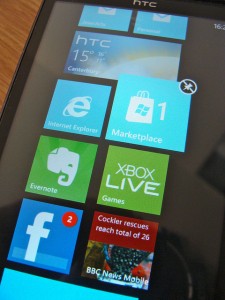Intuit and Fundbox Team Up to Provide Cash Invoices
Intuit, maker of the Quickbooks line of accounting software, has teamed up Fundbox to launch a cash advance service for small business owners.
The new service aims to solve one of the most common hurdles faced by entrepreneurs and small business owners: lack of cash flow. Using this service, small business owners can receiving financial solutions to pay off their outstanding invoices within Quickbooks.
Up until now, small business were able to sell their outstanding invoices to a third-party creditor through a “factoring” system. The new service being offered by Intuit and Fundbox, however, seeks to transform this solution so that business owners can maintain relationships with their clients and customers while still being able to manage their invoices. Intuit says this new service will leverage the power of Quickbooks reporting data without requiring credit checks to provide better financing for small business owners.
In a statement to the press, Intuit’s Alex Chriss said the reasoning behind this new service was to make it easier for small business owners to access short-term financing. Chriss goes on to say that the new service will streamline the application service.
“This is all about making it is easier for small businesses to access the short-term financing they need at the click of a button,” said Alex Chriss, vice president of Intuit’s Small Business Group. “Our partnership with Fundbox enables us to deliver a financing solution to our small business customers that streamlines the application process, offers quicker decision making, and, most importantly, offers fair and transparent pricing.”
Lack of financing continues to top the list as being one of the most common reasons why small business fail. Whether it’s a local business or online business, the fact remains that all ventures need some type of capital. Without it, there’s simply no way for them to grow and expand. The new cash advance service that is being offered by Intuit and Fundbox seeks to eliminate this problem by easing the process for which small business owners acquire capital.
What do you think of the new cash advance service that is being offered by Intuit and Fundbox? Let us know in the comments section below!
How to Cancel an Accountant’s Copy in Quickbooks
 Quickbooks allows users to create special “accountant’s copies” of their company file. Basically, this is a duplicate file that your accountant can use to make changes as you continue to work on the main file. If you are a small business owner, for instance, you may want to continue working on your Quickbooks company file at the same time as your accountant, in which case you should provide him or her with an accountant’s file.
Quickbooks allows users to create special “accountant’s copies” of their company file. Basically, this is a duplicate file that your accountant can use to make changes as you continue to work on the main file. If you are a small business owner, for instance, you may want to continue working on your Quickbooks company file at the same time as your accountant, in which case you should provide him or her with an accountant’s file.
But what happens if you no longer the need the services of your accountant? Rather than keeping the accountant’s file open and active, it’s recommended that you cancel it. Keeping the accountant’s copy open could lead to problems later down the road. For instance, someone may gain access to the file, adjusting your information without your knowledge or permission. To prevent headaches such as this from occurring, you should cancer your accountant’s copy when it’s no longer needed — a process that we’re going to explain further in today’s blog post.
To cancel an accountant’s copy, you’ll need to fire up your Quickbooks software and choose File > Send Company File > Accountant’s Copy > Client Activities > Remove Restrictions > and select the option titled “Yes, I want to remove the Accountant’s Copy restrictions.” When you are finished, click OK to complete the process.
If you are running an older version of Quickbooks, the steps to canceling an accountant’s copy are slightly different. From the File menu, choose Accountant’s Copy followed by Client Activities > Remove Restrictions > Yes, I want to remove the Accountant’s Copy restrictions.
Assuming you followed these steps, Quickbooks will then notify your accountant that his or her accountant’s copy has been canceled. Sorry if you were expecting more, but that’s all it takes to cancel an accountant’s copy in Quickbooks!
Did this tutorial work for you? Let us know in the comments section below!
Intuit and Kiva Team Up to Offer Interest-Free Business Loans
 Quickbooks maker Intuit has teamed up with the nonprofit organization Kiva to offer new interest-free loans for small business owners and entrepreneurs.
Quickbooks maker Intuit has teamed up with the nonprofit organization Kiva to offer new interest-free loans for small business owners and entrepreneurs.
According to the U.S. Census Bureau, there are approximately 27.9 million small businesses in the country. Unfortunately, though, many of these small businesses struggle to survive due to lack of capital. Regardless of the industry, all businesses need some initial capital to get started. But high interest rates can cut into the already slim (or nonexistent) profits of small business owners — something that Intuit and Kiva hope to change with their recent partnership.
Banks have also become increasingly hesitant to issue loans to small business owners. This has spurred a growing new trend of crowdfunding and micro donation — a trend that analysts say will continue in the years to come.
The new interest-free small business loans will be offered through the peer-to-peer Kiva Zip platform. According to a press release issued by the two companies, it estimates that roughly 500 small businesses will receive the loans each month, thanks largely in part to a $50,000 donation made by Intuit’s Freedom Foundation.
It’s important to note, however, that not all small businesses will be eligible to receive the interest-free loans offered by Intuit and Kiva. Small business owners must first apply for the loan, at which point their current financial status will be assessed to determine whether or not they eligible. Applicants who don’t qualify, however, should still create a profile on the website to help raise funds for their business. Kiva Zip loans can range anywhere from $5,00 to $10,000
“We are excited about our partnership with Kiva Zip and to offer small businesses the critical capital they need to start and grow their businesses,” said Jeffrey Kaufman, business leader of QuickBooks Financing at Intuit. “This platform serves a segment of small businesses who previously had no, or very limited opportunities to get the funding they needed. Additionally, the Intuit Financial Freedom Foundation donation is one way Intuit is supporting small businesses across the nation to give them a chance to thrive.”
Do you think the new interest-free small business loans are a good idea? Let us know in the comments section below!
How to Change the Location of Your Quickbooks Company File
 Looking to move your Quickbooks company file to a new location? If you are reading this, then I’m assuming the answer is yes. Unfortunately, there’s no clear option that allows users to move their company file. Just because it’s not clearly listed, however, doesn’t mean that it can’t be done. With a little bit of work, you can move your company file to a new location. Here’s how.
Looking to move your Quickbooks company file to a new location? If you are reading this, then I’m assuming the answer is yes. Unfortunately, there’s no clear option that allows users to move their company file. Just because it’s not clearly listed, however, doesn’t mean that it can’t be done. With a little bit of work, you can move your company file to a new location. Here’s how.
Before we start, it’s important to note that whenever you move, copy or rename a company file in Quickbooks, you should also move, copy or rename the associated log file. Failure to do so will result in mismatching log files, and when this happens, it will automatically disable syncing for your company file. Sync Manager will then prompt you to re-enable this feature and re-upload your company file. To prevent this type of headache from occurring, it’s recommended that you move the log file at the same time when you move your company file to a new location.
To move a company file to a new location, you can simply copy and paste it in the new destination using Windows file explorer. Now, return back to the location of the original file and locate the log file. As stated above, you must move the log file at the same time as the company file or syncing will be disabled, which can lead to a whole new world of headaches. Once you’ve located the log file, either cut or copy and then paste it in the same location as the company file. The log file will have the same name as the company file. Rather than using the standard company file extension, however, it will have a .tlg extension.
Now check the original location of your company file to see if it contains a folder named yourcompany_Logs. If you see this folder, copy and move it to the same location as your company file. Sorry if you were expecting more, but that’s all it takes to move a Quickbooks company file to a new location!
Did this tutorial work for you? Let us know in the comments section below!
Intuit Discontinues Mint App for Windows Smartphones
 Intuit, maker of the popular Quickbooks accounting software, has discontinued its Mint app for Windows smartphones.
Intuit, maker of the popular Quickbooks accounting software, has discontinued its Mint app for Windows smartphones.
In case this is your first time hearing about Mint, let me give you a quick explanation of what it is and how it works. Originally launched in 2006 by Aaron Patzer, Mint is a free-to-use personal finance management service that’s available in the U.S. and Canada. Using a single, convenient interface, it allows users to track bank transactions, credit card balances, investments, loans, and more. Intuit scooped up Mint for an undisclosed sum of money in 2009.
One of the perks of using Mint is its support for mobile operating systems, including Android and Apple iOS. While Mint was previously available for Windows phones, Intuit has since discontinued use for this OS. This begs the question: why is Intuit dropping Windows from its list of operating systems that support Mint?
The company issued a statement in which it explained its decision. According to the Mint team, they plan to focus their efforts on developing and enhancing the Mint experience for Web, iOS and Android (sorry Windows users!).
“We’ve promised to hold ourselves to the highest standard of quality in our products, and strongly believe that shifting our efforts to the Mint Web, iOS and Android applications will help us deliver above and beyond that promise,” wrote the Mint team when announcing the news. “There’s so much about the Windows Phone app that we love – and it’s hard for us to say goodbye to it – but we are confident that this change will help you get even more out of Mint.”
Of course, the decision to drop Windows from its supported operating systems makes sense considering the overwhelming popularity of Android and iOS. According to a recent report published in the International Data Corporation (IDC), Android’s share of the mobile OS market grew to 82.8% in the second quarter of 2015. In comparison, Apple iOS grew to 13.9%, yet Windows dropped to just 2.6%. If Intuit wants to capture the greatest number of users for its Mint app, it should focus on Android and iOS for this very reason.
Do you think this was a smart move for Intuit? Let us know in the comments section below
How to Connect Your Bank Account to Quickbooks
 Quickbooks allows users to connect their bank account(s) in just a few easy steps. What’s the purpose of doing this you ask? Well, with your bank account connected to Quickbooks, you can automatically download a list of all of your transactions. Instead of manually entering each and every transaction into Quickbooks, for instance, you can simply download the transactions from your bank account. Today we’re going to walk you through the process of connecting a bank account to Quickbooks.
Quickbooks allows users to connect their bank account(s) in just a few easy steps. What’s the purpose of doing this you ask? Well, with your bank account connected to Quickbooks, you can automatically download a list of all of your transactions. Instead of manually entering each and every transaction into Quickbooks, for instance, you can simply download the transactions from your bank account. Today we’re going to walk you through the process of connecting a bank account to Quickbooks.
To connect a bank account to Quickbooks, fire up your Quickbooks software and choose “Connect an Account” under the “Bank Accounts” menu on the Homepage. You will then see a new screen asking you for information associated with your bank account. Don’t worry, it’s completely safe and secure to enter your banking information in Quickbooks. In the “Import transactions from your bank or credit card” field, enter the URL of your online banking account. To the right of this field, you’ll need to enter the username and password associated with this account.
Assuming you entered the correct login URL, username and password for your online banking account, Quickbooks will reveal a list all of the accounts associated with the bank. If you only have a single account, you’ll see a single account listed. But if you have several banking accounts, you will see all of them listed. Select the account that you wish to use in conjunction with Quickbooks and specify whether it is a checking, savings, money market, credit card, or trust account.
Once connected, you will see all of the accounts you have at this bank. Choose the account you use for your business and tell QuickBooks what kind of accounts they are. Quickbooks will then pull all of the transactions that were made from the account within the past 90 days.
On the next page, click Category or Match column to begin sorting the transactions made from the past 90 days. If you wish to place a transaction in a separate window, you can do so by opening the transaction menu and selecting the appropriate one. For new transactions, simply click “Add” on the right-side of the page to add the new transaction.
Did this tutorial work for you? Let us know in the comments section below!
How to Print Pay Stubs in Quickbooks (the Easy Way)
 Looking to print pay stubs from your Quickbooks account? There’s actually a quick and way to do this. All it takes is a few basic steps which we’re going to reveal in today’s blog post.
Looking to print pay stubs from your Quickbooks account? There’s actually a quick and way to do this. All it takes is a few basic steps which we’re going to reveal in today’s blog post.
To print pay stubs, log into your Quickbooks account and select File > Print Forms > Pay Stubs. This should reveal all of the pay stubs/checks associated with your account. If you want to print a pay stub that’s attached to a separate payroll account, you’ll need to select the account from the “Bank Account” menu. Just click the drown-down menu and select the appropriate account. Quickbooks will reveal all of the checks from that payroll account along with their respective dates.
Depending on the size of your Quickbooks account, you may have trouble locating a single pay stub. In this case, you should narrow the results down by using a custom date range. In the “Checks Dated and Thru” fields, enter a date range during which you believe the payment was made. You can also narrow down your selection by clicking the “Employee” drop-down menu and selecting the employee to whom the payment was sent.
Once you’ve selected the appropriate payment, click the “Print” button. Although optional, you can also specify a different font and/or printer here. If you want to use a font that’s common used throughout your business’s marketing material, for instance, you can do so from the options here. Before the pay stub(s) begin to print, you must specify the number of copies you wish to create. When you are finished, click “Print” once again to begin printing your pay stub.
Keep in mind that when you print a pay stub on blank paper, your company’s name, street address and phone number will be listed twice. This information will be located both at the top of the page and at the bottom.
Alternatively, you can choose to email pay stubs to your employees from within the Quickbooks interface. Some people avoid this option, assuming it’s a security risk. But all emailed pay stubs are password-protected in PDF format, preventing unauthorized users from opening or accessing them.
Did this tutorial work for you? Let us know in the comments section below!
Quickbooks Tutorial: How to Merge Multiple Accounts
 Looking to merge multiple Quickbooks accounts into a single account? If you are reading this, I’m assuming the answer is yes. It’s not uncommon for accountants to set up several Quickbooks accounts, using one for each business for whom they provide services. While this may seem like the best solution, there’s really no need to use multiple accounts, as it only created greater confusion. Thankfully, you can merge multiple accounts together in just a few easy steps.
Looking to merge multiple Quickbooks accounts into a single account? If you are reading this, I’m assuming the answer is yes. It’s not uncommon for accountants to set up several Quickbooks accounts, using one for each business for whom they provide services. While this may seem like the best solution, there’s really no need to use multiple accounts, as it only created greater confusion. Thankfully, you can merge multiple accounts together in just a few easy steps.
Warning
Keep in mind that you cannot “undo” the changes after merging two accounts together. It’s a permanent process, so make sure you are comfortable with the process before proceeding. All transactions from BOTH accounts will be merged together, which may affect closed transactions as well as financial reports.
Furthermore, there are certain occasions in which you cannot merge two accounts together. This includes the merging of three or more accounts (you can only merge two). And you only merge accounts of the same type. If the accounts are of different types, you will not be able to merge them together.
Merging Your Accounts
When you are ready to begin, log into your Quickbooks account and select the Lists menu > Chart of Accounts. Verify that the accounts you wish to merge are located on the same level on the list. If they are on different levels, you must move them to the same. Next, click the account that you wish to eliminate (don’t worry, it will be merged). Now click the “Account” link at the bottom followed by “Edit Account.” From here you can rename the account to match the account that you are merging. When you are finished, click Save & Close to complete the process. Sorry if you were expecting more, but that’s all it takes to merge two Quickbooks accounts together!
Hopefully, this will give you a better idea of how to merge two Quickbooks accounts together. It’s a relatively quick and easy process that most people can do themselves, without the need for technical assistance. Assuming you have a Hosted Quickbooks plan, though, you can always seek help if needed.
Did this tutorial work for you? Let us know in the comments section below!
Quickbooks Tips and Tricks for Accountants
 Choosing the Right Version of Quickbooks
Choosing the Right Version of Quickbooks
Many people are surprised to learn that there are several types of Quickbooks, each of which has its own unique features and characteristics. The three different types include Quickbooks Online, Desktop Quickbooks, and Hosted Quickbooks. So, which one should you choose? Hosted Quickbooks is actually the Desktop version that’s “hosted” by an authorized third-party. It offers the greatest flexibility and easy of use, making it the recommended choice for accountants.
Close Windows Fast
There are two different ways to close windows in Quickbooks: you can close them by clicking the [x] button in the upper-right corner, or you can do it simply by pressing the Esc key. If you are trying to streamline your accounting (which you should be), try to get into the habit of using the Esc key. This alone can save you huge amounts of time, as it eliminates the need to move your mouse around from window to window.
Disable Spellcheck
Quickbooks has a built-in spellcheck that’s enabled by default. This feature is great for catching those grammar and spelling mistakes in your invoices and other documents. However, it can also be a nuisance, especially when it catches words that aren’t really mispelled. You can disable the spellcheck feature by logging into your account and choosing Edit > Preferences > My Preferences > and untick the box next to “Always check spelling before printing … .”
There’s a Hidden Calculator…
Did you know that Quickbooks has a calculator built into never field? Rather than opening a separate calculator on your computer, you can simply crunch your numbers straight from the field. To use it, click on a field and then press the + button. This will enable the calculator so you can add, subtract and perform other operations.
Templates
Another helpful feature included in Quickbooks is pre-made templates. Whether you are a contractor, accountant, business owner, etc., there’s probably an invoice template for you. But you don’t have to limit yourself to only using the invoice templates provided in Quickbooks. All of these templates can be edited and customized according to your liking.
How to Use a Custom Invoice Template in Quicbooks
 Want to send your customers or client a custom invoice template? If you are reading this, I’m assuming the answer is yes. Custom templates are a great way to enhance your brand’s image, presenting your business in a more professional manner. Thankfully, Quickbooks offers a quick and easy solution for business owners and accounts who wish to use custom templates. Here’s how.
Want to send your customers or client a custom invoice template? If you are reading this, I’m assuming the answer is yes. Custom templates are a great way to enhance your brand’s image, presenting your business in a more professional manner. Thankfully, Quickbooks offers a quick and easy solution for business owners and accounts who wish to use custom templates. Here’s how.
To create a custom invoice template, log into your Quickbooks account, and from the main menu, select Customers > Create Invoices. You should now a see of list of pre-made templates offered by Quickbooks. Scroll through the list and choose the one that you would like to customize. You can click the “Print Preview” button at the top right of the template to preview how it will look once printed.
Quickbooks offers several different pre-made templates by default, each of which can be customized according to your liking. Some of these templates includes invoices for accountants, invoices for contractors, invoices for franchises, invoices for nonprofits, invoices for retail businesses, invoices for service industries, and general invoice templates with varying graphics and colors.
After choosing a template, click “OK” to open the template so you can edit it. There are several different ways to customize an invoice template, some of which includes the following:
- Add your company’s logo to the the template (you can also move the logo around to different locations).
- Update the template to reflect your company’s contact information.
- Include terms and conditions on the template.
- Add or remote the “status stamp.”
- Edit the title of your invoice template.
- Rename any of the fields on the template, such as date, invoice number, and ship to.
- Include the customer or client’s balance on the template.
- Rename a column on the template.
- Add lines and/or borders on the template.
Once you are finished editing your invoice template, click “Save” to save the changes and close out of the template editor. You may then choose your new template when sending an invoice to a customer or client. Assuming you chose the appropriate template, it should reflect all of the changes that you recently made.
